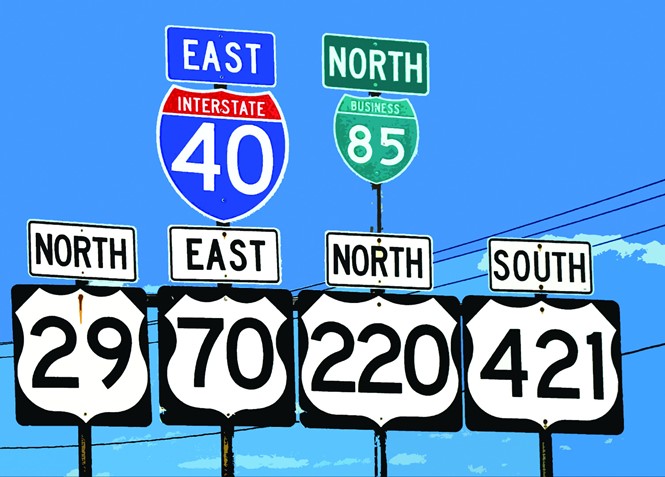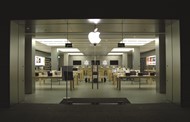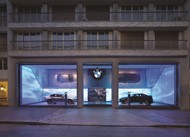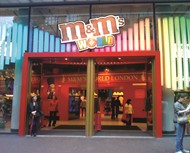Writing on the wall

Wayfinding and signage can bring a brand to life, often on a large scale. Thus, when implementation is incorporated into the initial brand strategy, the rebrand is apt to work on a practical level. How can brands plan for better implementation? Emily Andrews investigates
On the surface, wayfinding and signage are simply necessary parts of the brand implementation process. But there is potential for signage to be more than an afterthought, it can contribute to the strength of the brand itself.
The implementation process can make or break the branding creative and can help to reinforce brand messaging.
On a technical level, wayfinding and signage are the on- the-ground representations of the brand. Whether it be a digital billboard or a paper poster, signage and wayfinding are a means to an end, they inform audiences and communicate a message.In addition to that, signage is a major touchpoint between the brand and its stakeholders.
Some sectors are particularly challenging to operate in, though these tend to be the areas where there is ample room for innovation. Airlines, sporting events and retail environments are some of the areas in which signage can have a particularly influential effect due to a growing preference for an all- immersive brand experience. But the scale of implementation in these sectors means that there are plenty of challenges.
Julie Shoenfelder, brand implementation director at GLIMMA, a global brand implementation firm, says, “The car industry is looking at how to improve the customer experience in the retail house and how to change the buying environment. That’s where they’re willing to innovate and the innovation challenges at the same time.”



Creating an experiential brand environment is key for big brands looking to engage with their consumers on a deeper level. The available space and surface, as well as the audience and the content itself, are all key considerations during signage implementation. If done well, it can contribute to the overall immersive brand environment.
Airlines frequently create an immersive brand experience for their customers and staff. The nature of the airport itself allows for an experience of the brand that is seamless and continuous. Within that environment, airlines have their own lounges and spaces where their own brand can be experienced. The overall effect is a combination of service, visual identity and, of course, signage. The signage is crucial as it communicates much of the brand messaging. It can be a vehicle for tone of voice and visual identity. The content and the form of the signage are indicators of the airline brand’s defining characteristics. Is it a luxury or a budget airline? Where does it fly to? Is there brand heritage? Nuanced questions about where the airline flies, its brand heritage and its market are answered through the signage and wayfinding which help to maintain organisation in a busy and fast-paced environment.
Retail environments are equally opportune for experiential branding and signage innovation. M&M’s Worlds, large department stores and Apple retailers all offer an experience that goes beyond a simple offer of their products. Schoenfelder gives the example of car retailers, she says, “If you go into a
car retailer you’re really entering their little world. I think companies like BMW and others are taking on a bit of the Apple experience, if you can call it that. Their retail houses are massive, so that’s a really, really interesting sector.” Signage coats the walls and surfaces in these kinds of environments, the different surfaces and spaces all pose a challenge for the brand implementation team.
At sporting events, fans are made to feel as if they belong to a community. The signage and wayfinding contribute to this sense of belonging to a club and drive loyalty with the sports brand during the event itself, while helping to manage huge crowds. Major League Soccer (MLS), a professional football league in both the United States and Canada, recently rebranded with a new crest that has the ability to be modified to fit the colour schemes of each individual club. This allowed for the clubs to keep aspects of their own local identity while keeping the overarching brand seamless. The implementation unites clubs across the United States and Canada, creating both local and nationwide communities and serves to ease navigation at large-scale events.
Dan Courtemanche, executive vice president of communications for MLS, says scalability from mobile devices to stadium signage was a consideration in the league’s rebrand, which launched last year, “We had to make something that was for everyone and not just for the league office. That made us consider the design, ensuring the brand can scale up and down and still be legible and communicate MLS regardless of the size or application.”
Beyond sector, there are other factors which can complicate the signage process. When a brand operates internationally, there are a range of challenges relating to language, and even cultural nuances, which affect the way a brand message is received and understood.
“You’ve got the difficulty of getting the right specifications and the right materials that can cope with extreme sunlight or extreme temperature changes and at the same time reflect the brand identity”
During GLIMMA’s recent rebrand of South American airline Avianca, there were communication issues due to the brand being implemented across Spanish, Portuguese and English- speaking countries. This meant that the signposting had to be multilingual. In addition, airport regulations, which differ from one country to another, slowed down the implementation of the airline branding project.
Tom Hill, VP of US sales and business development at GLIMMA says, “In the US, with the Transportation Security Administration, it’s a 24-hour clearance period. When you get down into Latin America and Central America, the clearance period could be three to five days for individual crew.”
As with any challenge, multilingual signage can be a great opportunity for creativity. A recent branding of Louvre Abu Dhabi combines Arabic and Roman script. The museum, an extension of Paris’ Louvre, was designed by architecture and design firm Jean Nouvel Atelier, the new logo and typeface were designed by Studio Philippe Apeloig. The typeface Apeloig chose, Frutiger, was selected for its modernity and flexibility across signage. It then developed the typeface further, creating Frutiger LT to accommodate for use across many languages. The effect is incredibly seamless and appealing. Apeloig will develop a full brand, wayfinding and application for the museum, which is set to open in December 2015.
When communicating in multiple languages, though, it is important not to lose brand voice and feel. When Generator Hostels rebranded back in 2013, it created a new brand with a fun and social personality to suit its young clientele. This strong voice had to come across in its signage and wayfinding, even across the three different languages it was using. The wayfinding and signage, developed by Bisqit, a design agency based in the UK, uses slang, humour, wit and youth-driven phrasing to connect with visitors. Illustrated icons, which have the appearance of being hand-drawn, direct guests around the hostels.
Short timeframes are always a big challenge for implementation agencies and this is only exacerbated by working internationally. Absolute SG, a UK-based signage and graphics consultancy, was charged with creating the signage for WorldPay’s 15 offices in eight countries. Jonathan Burge, director and founder at Absolute SG, says the project was one of the most intensive he’s ever worked on. Burge and
his team were given just over a month to complete the implementation project. Accounting for a shipping delay up to 10 days in some places, the Absolute SG team had about three weeks to design and manufacture hundreds of signs and displays. However, the project was a success and Burge says, “It was easily one of the most satisfying projects Absolute SG has been involved in. We rebranded the National Probation Service, there were 40 buildings in two days, but that wasn’t as exciting as the entire world.”
Practically, a global implementation project can make it difficult to source materials that aren’t necessarily available worldwide. Schoenfelder says, “You’ve got the difficulty of getting the right specifications and the right materials that can cope with extreme sunlight or extreme temperature changes and at the same time reflect the brand identity.” Local authorities and management of on-the-ground employees can also prove challenging when operating on an international scale and this is amplified by language barriers.
Ultimately, signage and wayfinding improves the customer or the employee, journey. If it creates a better journey or experience, by making it faster, more pleasant or easier for the person on the receiving end, while contributing to a seamless overall brand experience, then it has done its job.
Schoenfelder says, “The contribution of signage and wayfinding is perhaps modest in a way, but it should attract, and it should inform and it should help a trip or visit become more successful. Wayfinding is not really advertising so it should be quite discreet. It should be informative, it should be attractive, it should fit the brand, but it shouldn’t be in your face and it shouldn’t be too invasive.”
Although signage and wayfinding is often discreet, it shouldn’t be an afterthought, but included in the rebrand strategy from the outset. After all, a rebrand will fall short if it doesn’t work on a practical level.


